Dubbed ‘The Big Book of Everything’ by the studio during its multi-year development, Experience – published by Phaidon earlier this week – distills almost three decades of Olafur’s experiments into 440 pages. The monograph gives a chronological overview of his installations, large-scale sculpture, architectural projects, and interventions in urban space while also featuring smaller, more delicate artworks, including paintings and drawings, photographs, and glass works.
For our new collaboration with Rimowa, we've produced a collection of stickers with phrases and images of everyday treasures like rocks, moss, and driftwood that allow people to create a meaningful constellation of ideas on their suitcases that can act as an inspiring reminder, when they are away from home, of where they have come from and where they would like to go – all proceeds are going to the Little Sun Foundation to help them realise their mission: delivering solar energy to the most vulnerable communities in the world.

Save the climate - stop coal! This Saturday in Berlin (Kanzleramt) and Cologne (Deutzer Werft) at 12:00

Access to energy is key to human existence: it affects social life, work, education, and health. In rural areas of Zanzibar, much like in most of Sub-Saharan Africa, missing electricity makes healthcare more complicated. As part of Little Sun's mission to make universal access to clean energy a reality, we have been working hard on delivering solar-powered devices in remote areas to ease access to health services and improve livelihoods. In rural areas of Zanzibar, almost half of Zanzibari women deliver their children at home due to lack of money for transport, traditional practices, or lack of planning. Community Health Volunteers help pregnant women overcome these barriers and provide advice around key health topics. As many of the Volunteers lack electricity in their homes, Little Sun has equipped 250 of them with portable solar-powered phone chargers. The chargers provide the reliable energy needed to power their most important tool: the smartphone. With the seen success of the collaboration, the Little Sun Foundation has now pledged to donate 500 more Little Sun Charges, aiming at equipping all Community Health Volunteers with a solar phone charger, so that they can work efficiently in assuring safe and high quality health care to the women and families who need it.
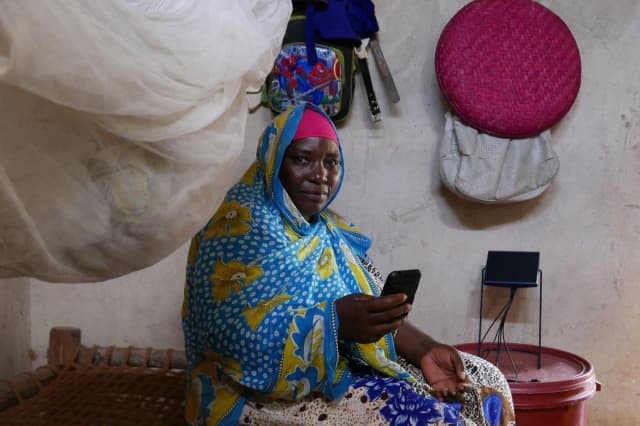
'I once found myself in the situation that I had to pick up an expectant mother at night. I took my Little Sun Charge with me, because I never leave it behind. Along the way it so happened that the women could not wait any longer and we had to prepare for her birth in the car. Our roads are terrible and the vehicle was small. But the solar light helped us a lot. It lit up the birth and I could help in the delivery – all went well.' – Amina Rashid Bakari, Community Health Volunteer, Zanzibar
Hippolyte et Aricie at the Staatsoper, Berlin
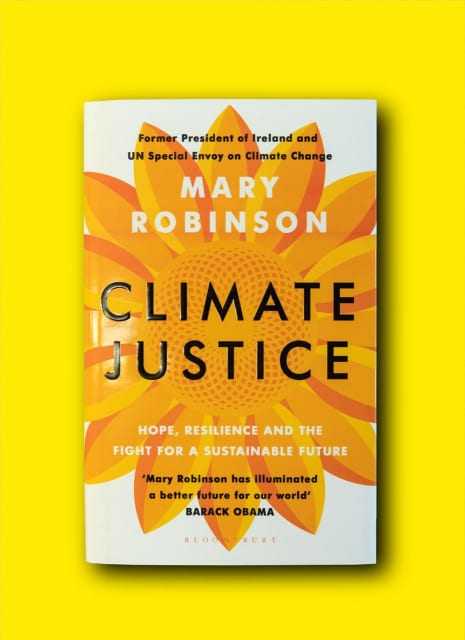
Today: We’re excited to host the launch of Mary Robinson’s new book Climate Justice. The event will be live streamed on soe.tv from 18:30 Berlin time.
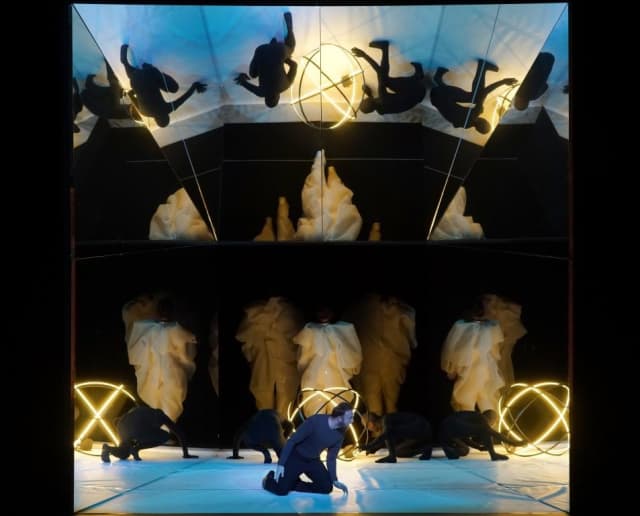
Hippolyte et Aricie at the Staatsoper, Berlin, premieres on 25 November, written by Jean-Philippe Rameau, directed by Aletta Collins, conducted by Simon Rattle, with stage and costume design by Olafur Eliasson.
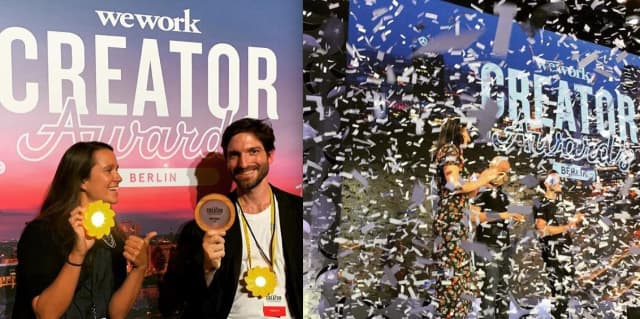
Congratulations to Little Sun, who just won the Creator Award for Best Non-Profit last night in Berlin!

Opening today in Singapore: Seu corpo da Obra (your body of work), 2011, ArtScience Museum, and Room for one colour, 1997, National Gallery Singapore
Parallel to the development of the design for the opera Hippolyte et Aricie at the Staatsoper in Berlin, the studio collaborated with artist Benjamin Skop, whose work studies the movements of the human body, in a series of videos. In this video, Skop amplifies his movements with lasers to produce ephemeral, geometric shapes.

Tomas Saraceno - On Air, Palais de Tokyo. 'Which synaesthetic modes of perception do we need to re-sense the world we live with? Algo-r(h)i(y)thms is an invitation to join a three-month long cosmic jam session, playing with, and becoming part of, a network of unexpected encounters. When you touch the strings, they resonate at different frequencies, some audible and some beyond the human range of hearing, as infrasounds.'

For the visual concept of the upcoming run of ‘Hippolyte et Aricie’ at the Staatsoper in Berlin, Olafur has approached the costuming as part sculpture, part body extension. This opera’s concept finds historical sympathies with the work of the visionary German painter, sculptor, choreographer, and costume and set designer Oskar Schlemmer, associated with the Bauhaus school. Having produced many works that crossed creative disciplines, Schlemmer described his performance as ‘artistic metaphysical mathematics’ and a ‘party in form and colour’. Parallel to his artistic career, the West had entered into the automated era, and Schlemmer’s theatre productions reflected a kind of romantic pursuit of detached forms through abstraction of performers’ bodies. In his costuming concepts, he would use geometric forms to dramatically extend limbs into space, blurring the boundary between costume, architecture, and stage set. The effect was that the players would appear robotic, ‘post-flesh’, while the combination of costume and dance made an emotional, human appeal to the audience.
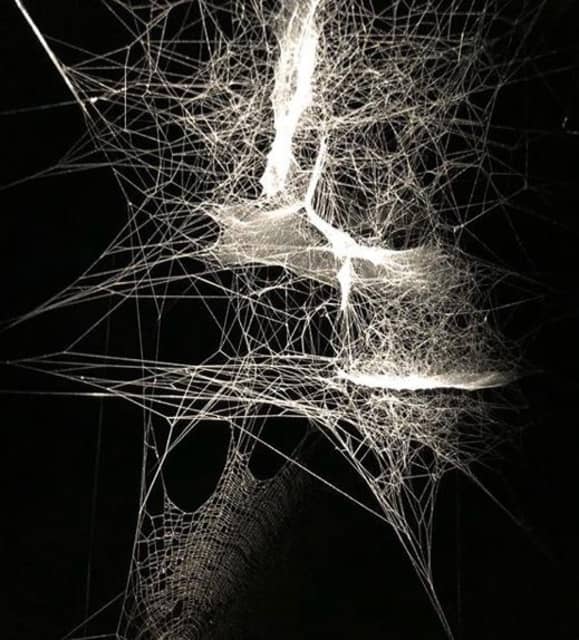
Premiering on 25 November at Staatsoper, Berlin: Hippolyte et Aricie, by French baroque composer Jean-Phillipe Rameau and for which Olafur created the sets, costumes, and overall lighting concept

What lies at the edge of our senses and knowledge, of our imagination and our expectations?
Where is the horizon that divides, for each of us, the known from the unknown?
High Life - a new film by Claire Denis. Olafur gave artistic advice on the film, and Denis and he have been in conversation about topics like light, space, and black holes since his 2014 exhibition 'Contact' in Paris

During the experimentation and development stage for the set, and costume design for Hippolyte et Aricie

Claire Denis and Olafur Eliasson during the filming of Contact
Contact - a film by Claire Denis. In 2014, Olafur and filmmaker Claire Denis met to discuss their common fascination with phenomena that have not yet been fully explained by science – such as black holes – and their shared interest in abstraction; this short film by Denis, contemplating tests for Eliasson's work ‘Contact’, 2014, is one outcome of that conversation. Watch the full film on www.soe.tv
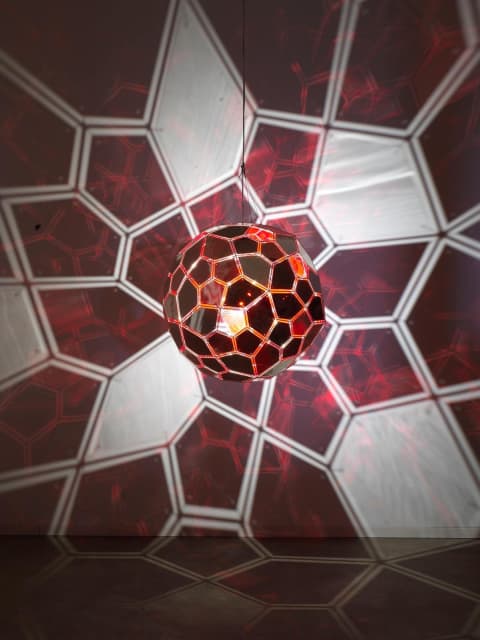
Love sphere, 2018. ‘I like the idea of using art and culture to generate awareness and support for people to get healthy. There are amazing stories of what happens through access to life-saving anti-retroviral medication, but the fight is only at the halfway point. This is a dangerous time because people think AIDS isn't a threat anymore. We have to keep the pressure on and get new generations involved at home if we’re going to put an end to AIDS once and for all’, says artist Theaster Gates, who, together with Sir David Adjaye, has collaborated with musician and activist Bono to curate the third (RED) Auction to support the fight against AIDS. Centred on the theme of light and the colour red, the collection of contemporary art and design will be auctioned by Sotheby’s during Art Basel Miami Beach and Design Miami on the evening of 5 December 2018 – including global bidding that will be available live online and by phone. The auction will be preceded by a public exhibition presented by Gagosian at the famed Moore Building, which will open 1 December. Olafur has donated his work ‘Love sphere’ to be auctioned at the event. To date, (RED) has generated more than $500 million for the Global Fund to support lifesaving HIV/AIDS programs in Africa. Proceeds from this year’s auction will continue to support community-based programs in Africa through the Global Fund to Fight AIDS, while also providing assistance to the HIV fight through community-strengthening programmes in Chicago with the Rebuild Foundation – an organisation championed by Theaster Gates. Lear more here: red.org


Olafur on Glacier - a new book by Ragnar Axelsson: 'There is a strange human longing for untouched nature. This is neither new nor exceptional, it’s a mode of reflecting on oneself in relation to ‘the other’, to ‘the big beyond’, a longing out of which ideals and utopias are constructed. Ragnar Axelsson, however, eschews utopias, taking another route. He has a calm, analytical gaze. The extraordinary photographs presented in this volume bring that which is otherwise invisible to our eyes and minds, into the realm of the visible. Axelsson’s almost scientific approach – which also embraces the immaterial and the atmospheric – brings these Icelandic landscapes to our attention, makes them felt. Axelsson is clearly comfortable with the abstract and with the patterns that physical landscapes create. He embraces the commingling of abstraction and beauty head-on, yet his pictures are always present, accessible, there for you. They are open, ready to meet up. The artist stays in the background, a facilitator of encounters between the landscape and your own way of seeing. Nature becomes landscape the moment it touches a person: you, the viewer. You – never an eye only, but a vibrant composite of ongoing perceptual and cerebral activities interlinking, framing, and shaping each other. You look, supported by your body – a biological entity – and by your cultural framework, your worldview, your everyday with its little challenges, big challenges, and moments of hesitation and of joy. In your encounter with the landscape it is changed and it changes you.'

The new Little Sun Black Diamond - a special edition available from 1 November until Christmas. For every lamp sold as part of this campaign, two solar lamps will go to people in an area without reliable access to energy.